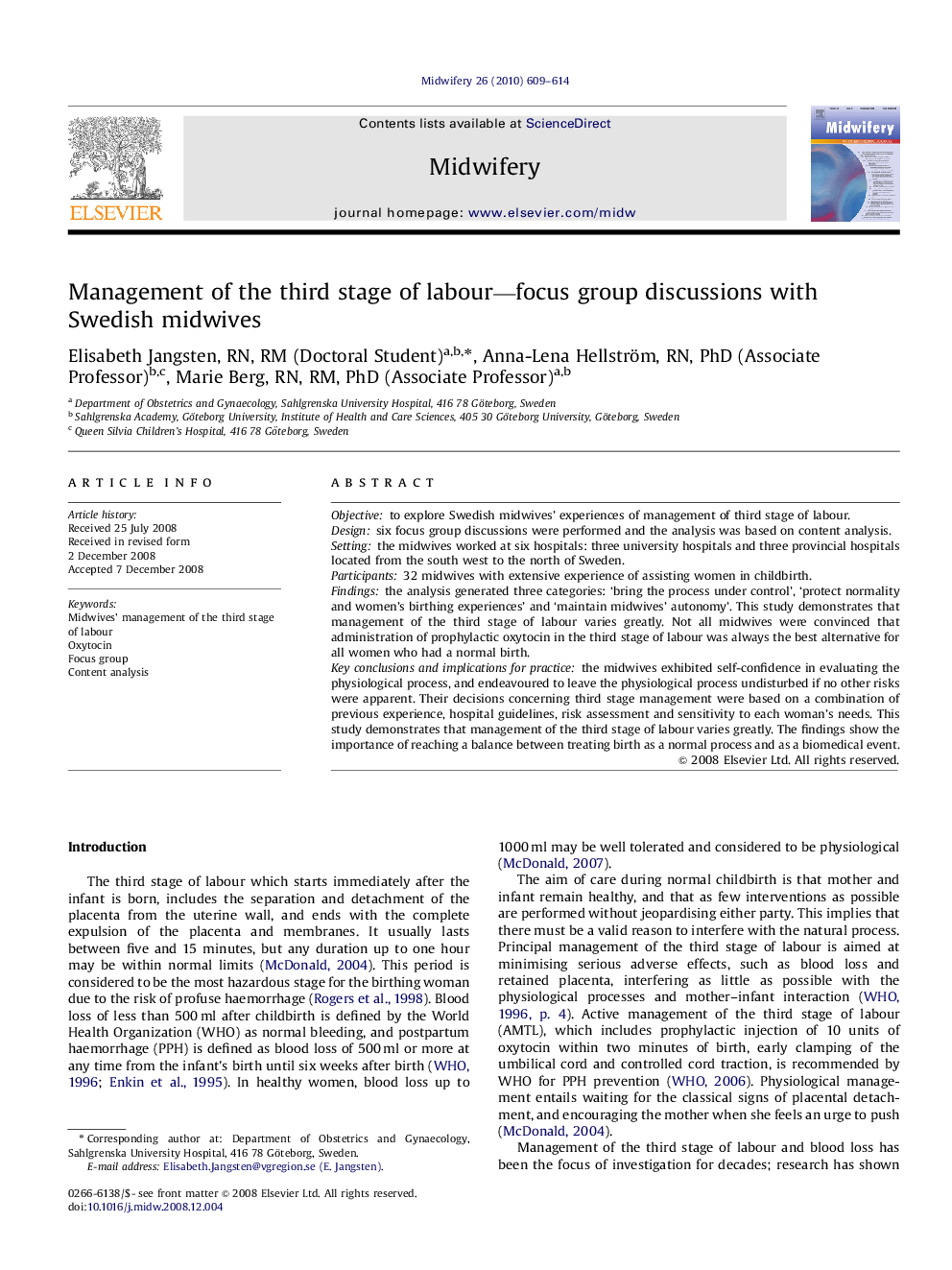| Article ID | Journal | Published Year | Pages | File Type |
|---|---|---|---|---|
| 1085164 | Midwifery | 2010 | 6 Pages |
Objectiveto explore Swedish midwives’ experiences of management of third stage of labour.Designsix focus group discussions were performed and the analysis was based on content analysis.Settingthe midwives worked at six hospitals: three university hospitals and three provincial hospitals located from the south west to the north of Sweden.Participants32 midwives with extensive experience of assisting women in childbirth.Findingsthe analysis generated three categories: ‘bring the process under control’, ‘protect normality and women's birthing experiences’ and ‘maintain midwives’ autonomy’. This study demonstrates that management of the third stage of labour varies greatly. Not all midwives were convinced that administration of prophylactic oxytocin in the third stage of labour was always the best alternative for all women who had a normal birth.Key conclusions and implications for practicethe midwives exhibited self-confidence in evaluating the physiological process, and endeavoured to leave the physiological process undisturbed if no other risks were apparent. Their decisions concerning third stage management were based on a combination of previous experience, hospital guidelines, risk assessment and sensitivity to each woman's needs. This study demonstrates that management of the third stage of labour varies greatly. The findings show the importance of reaching a balance between treating birth as a normal process and as a biomedical event.
